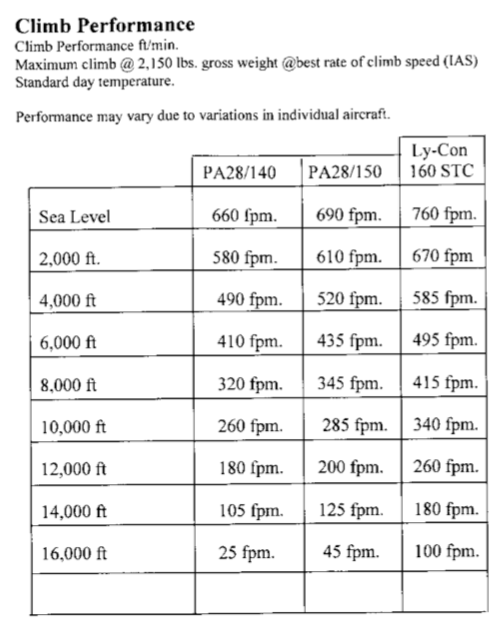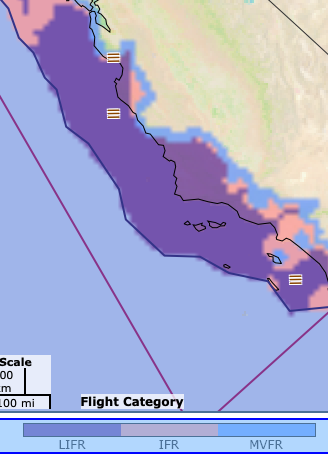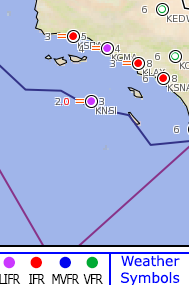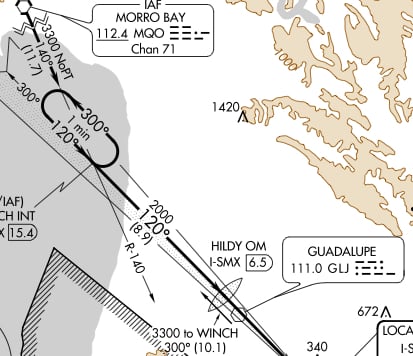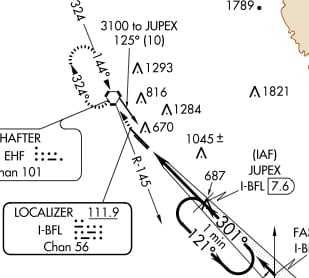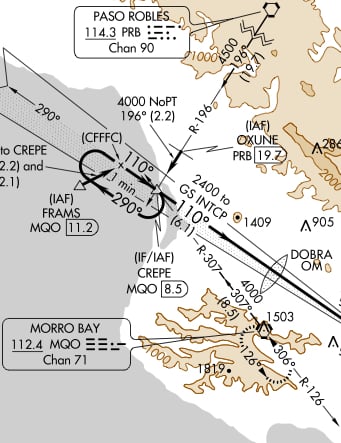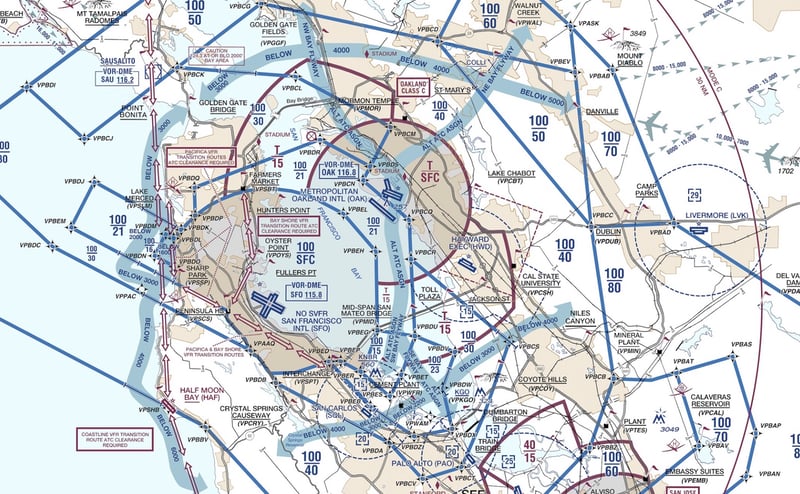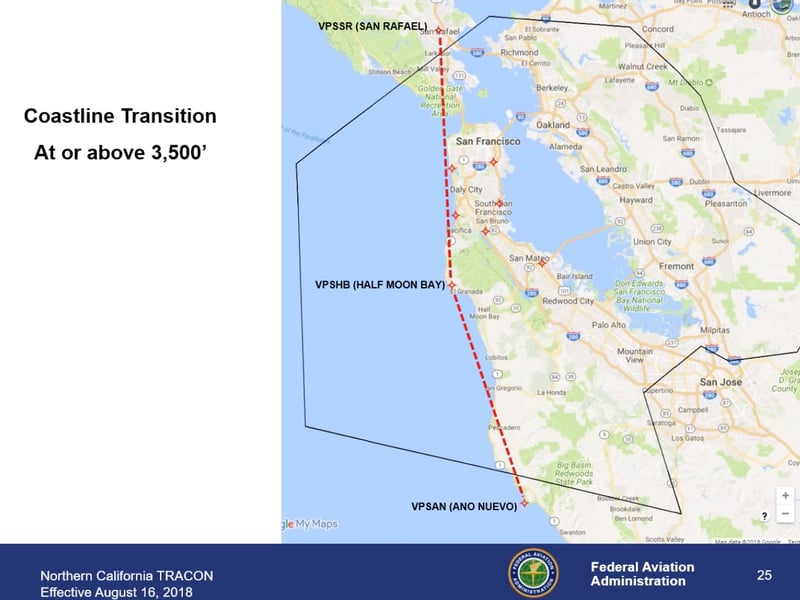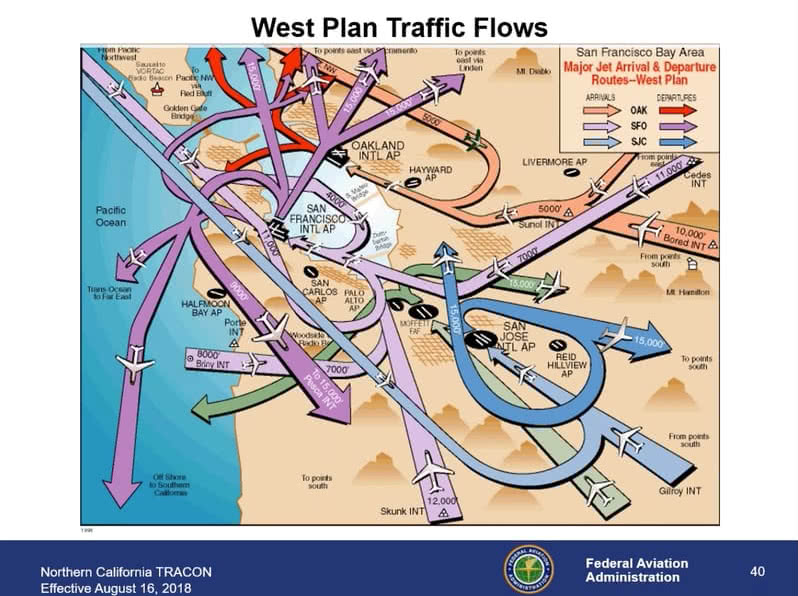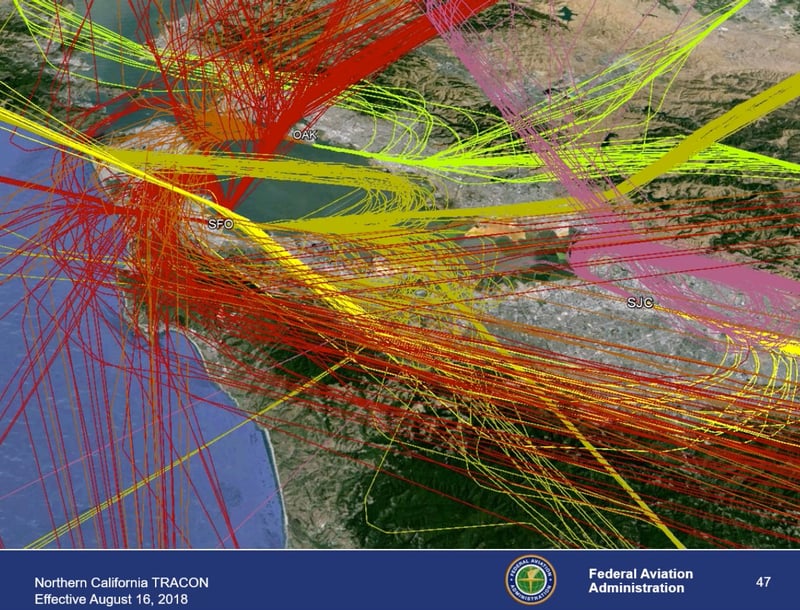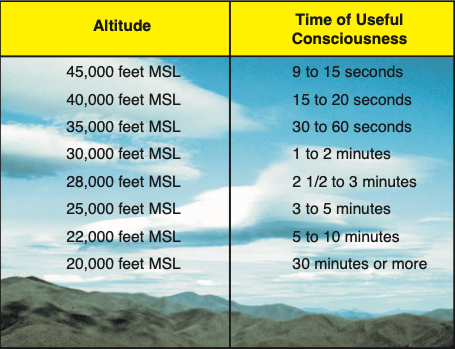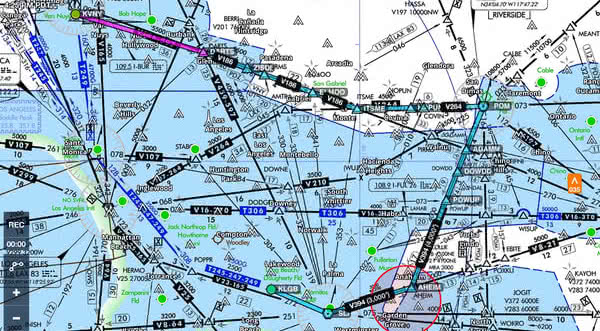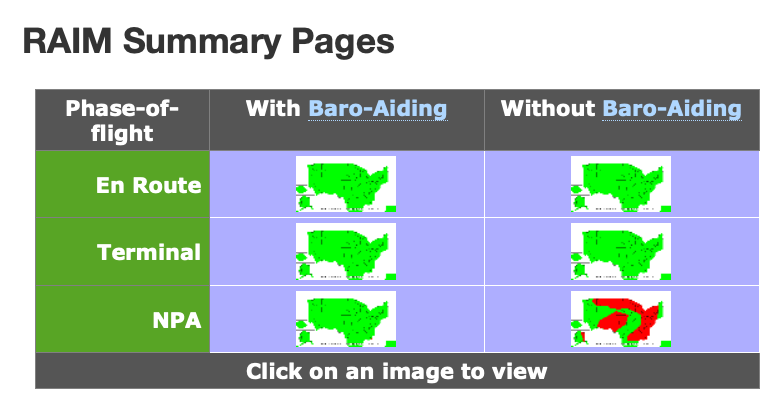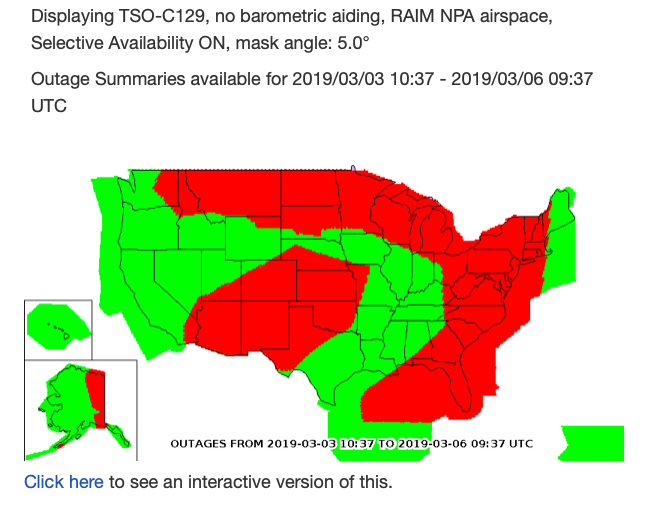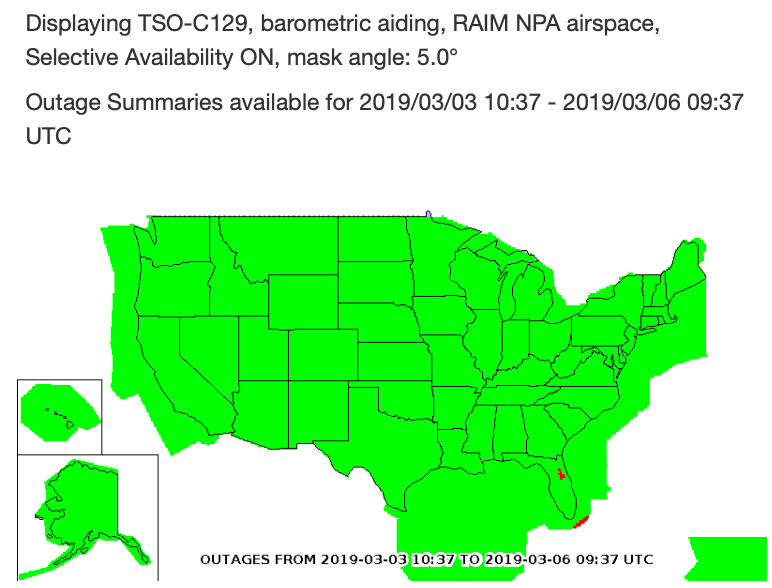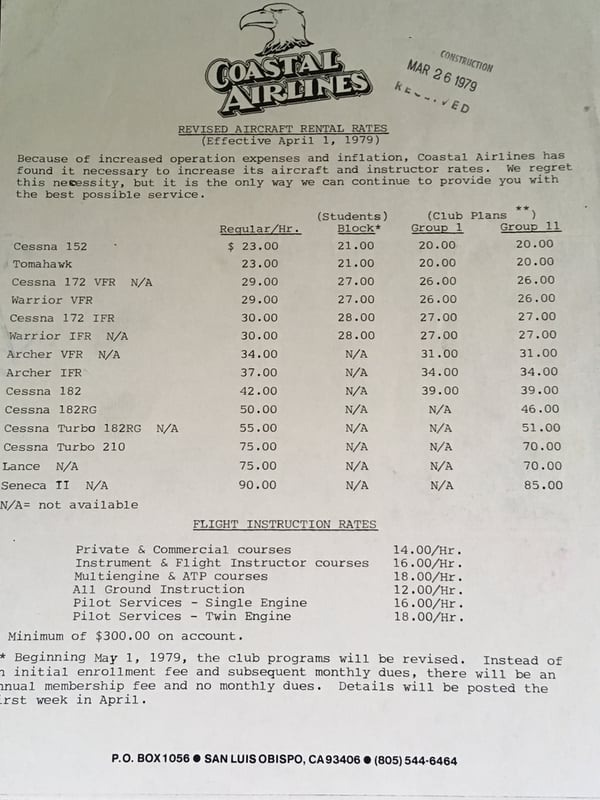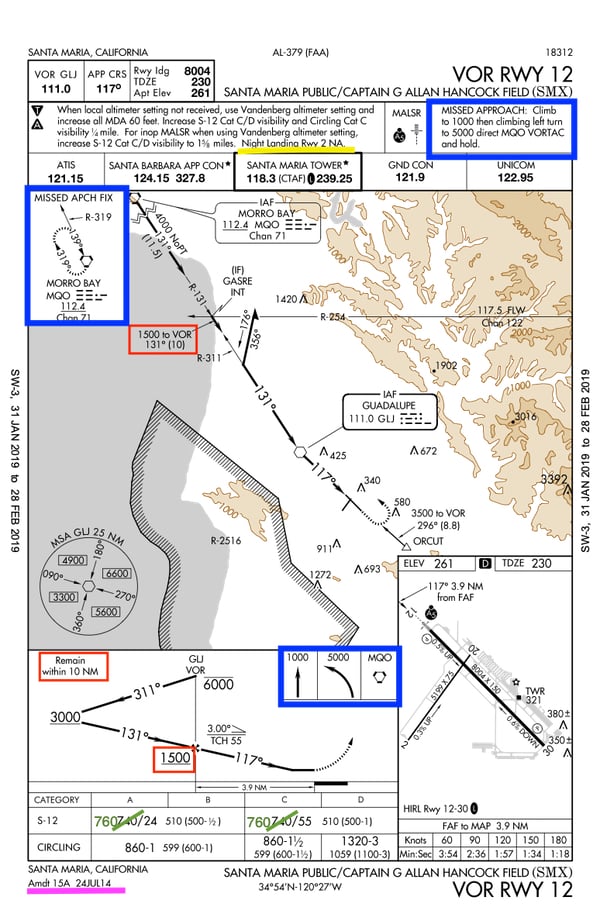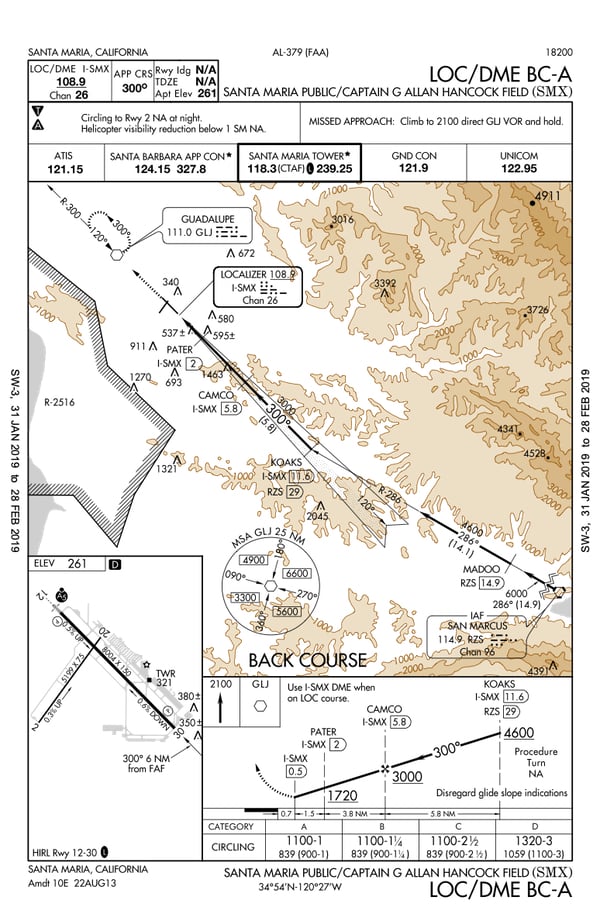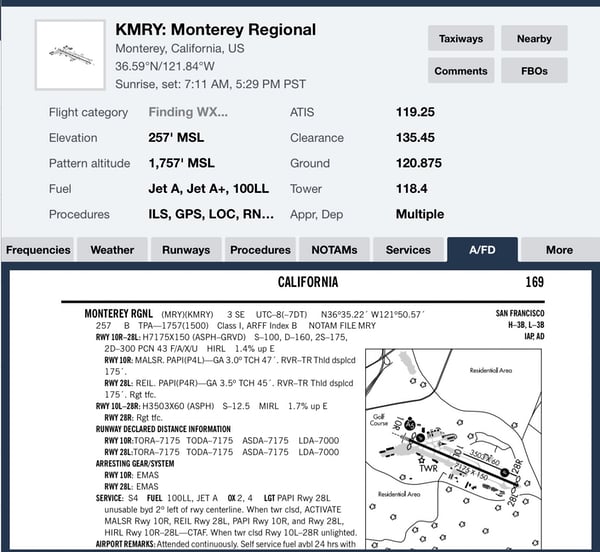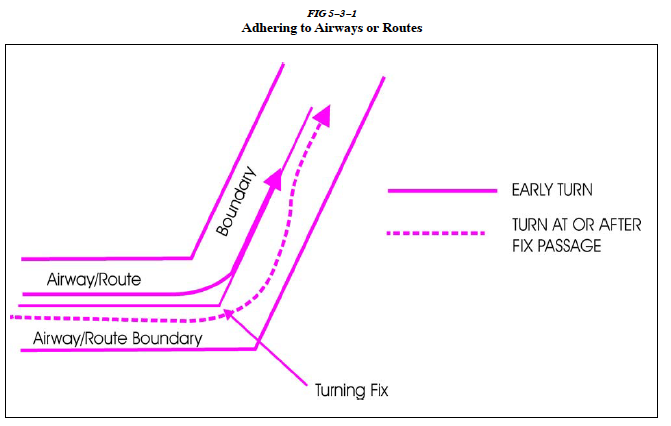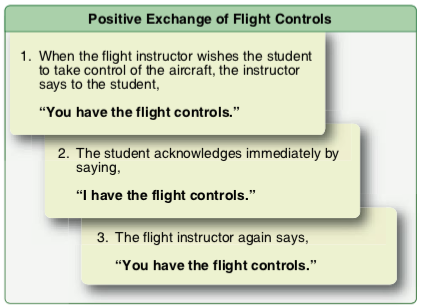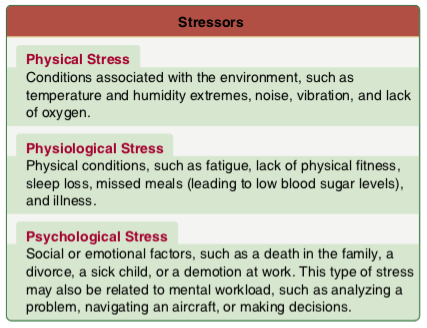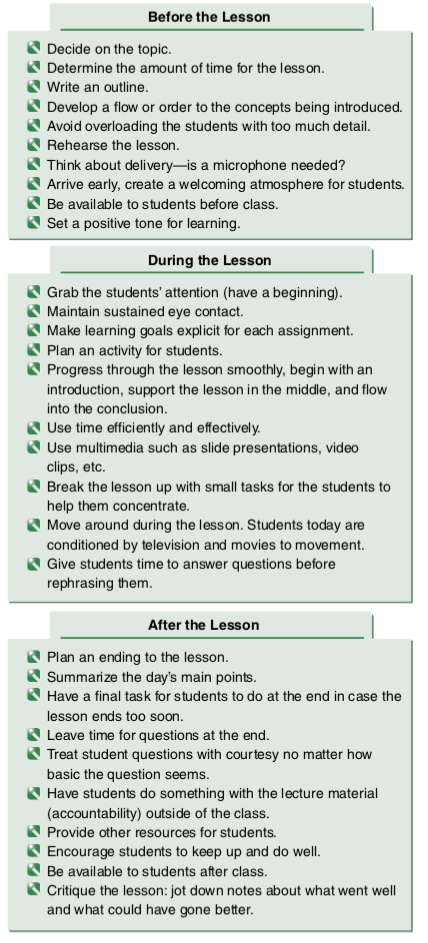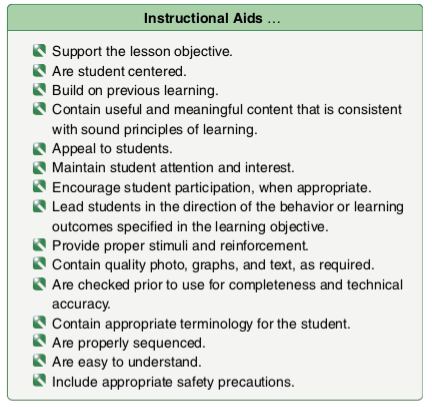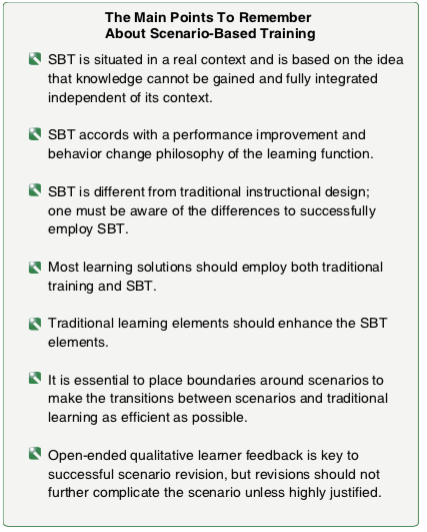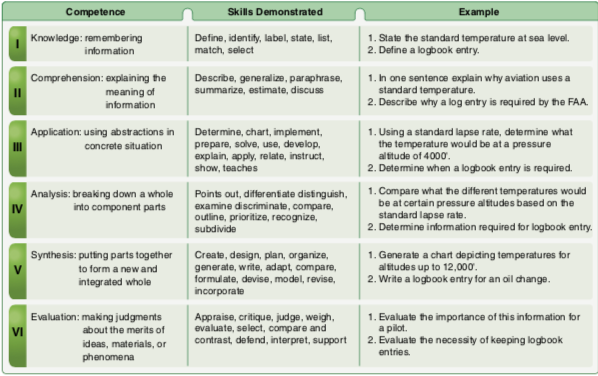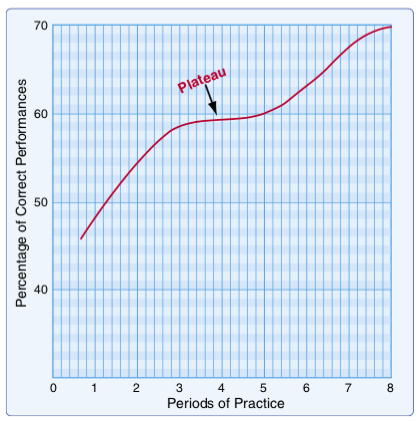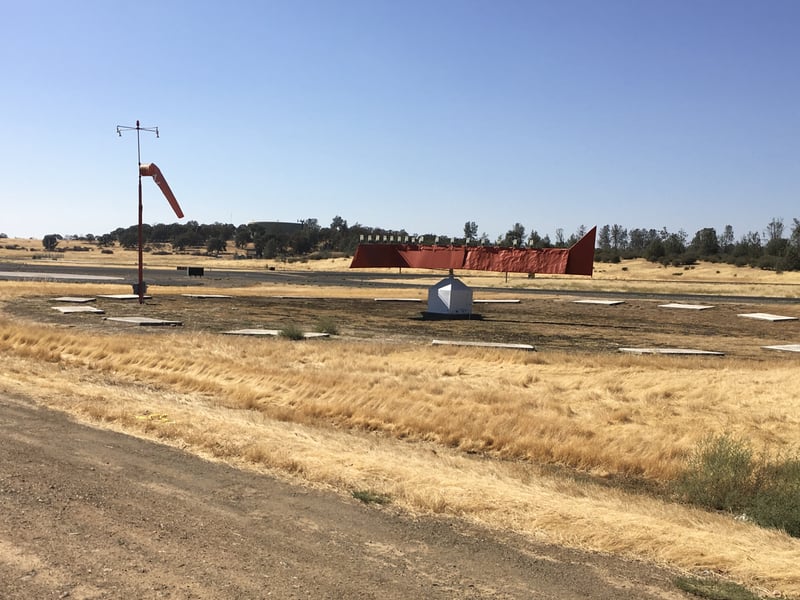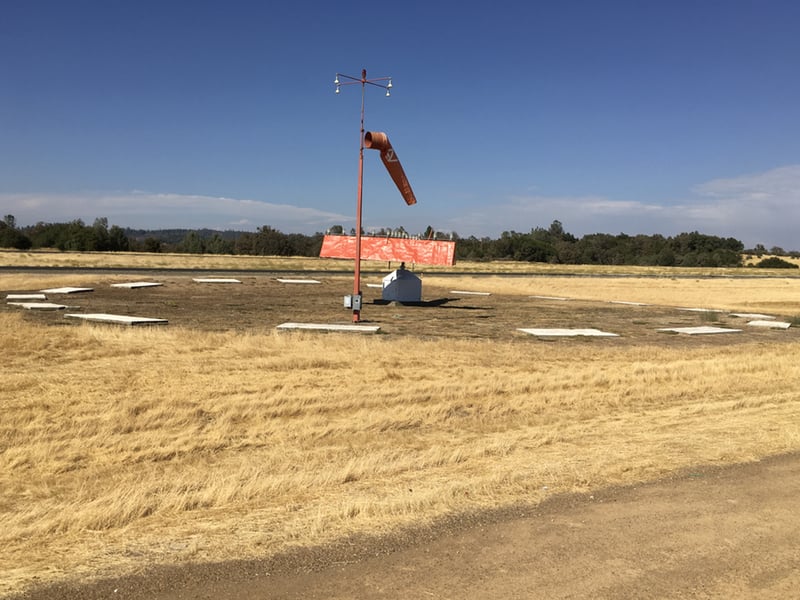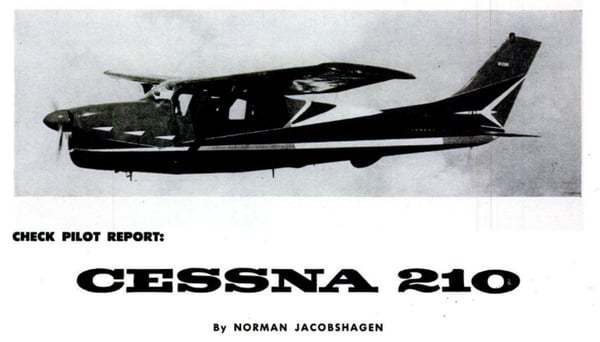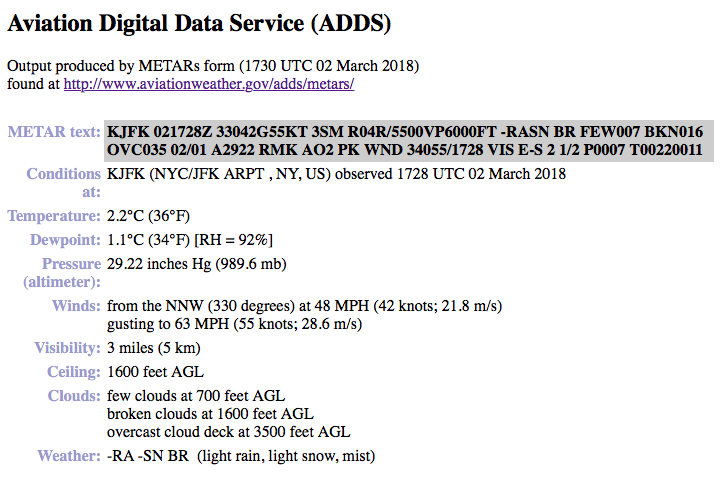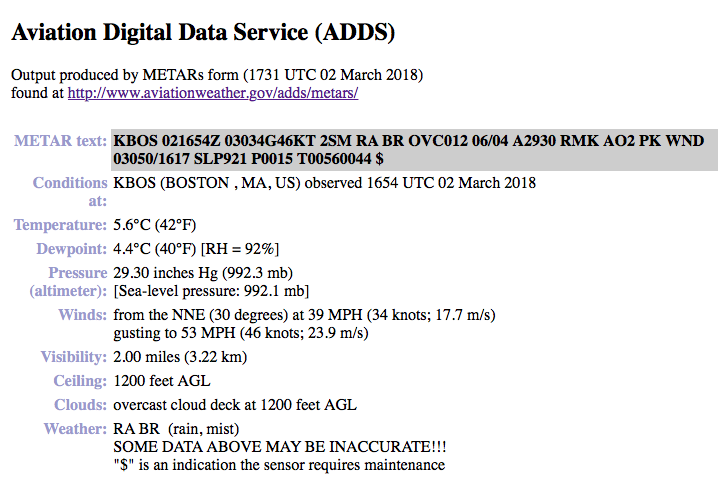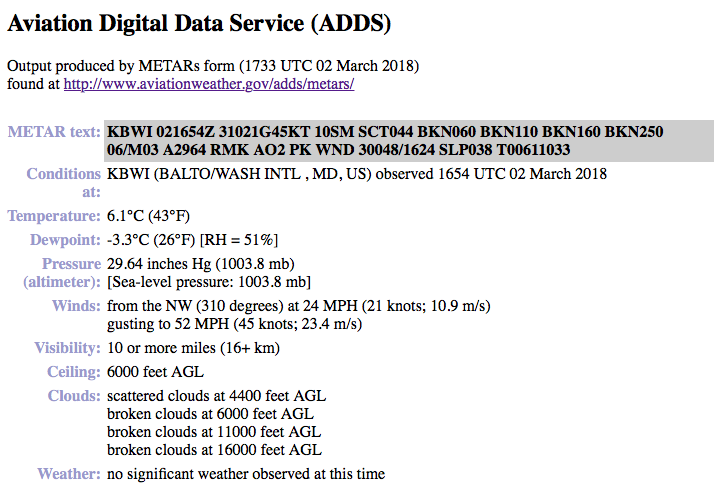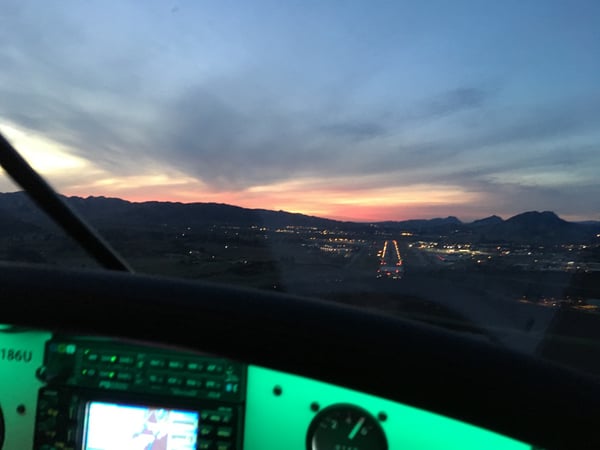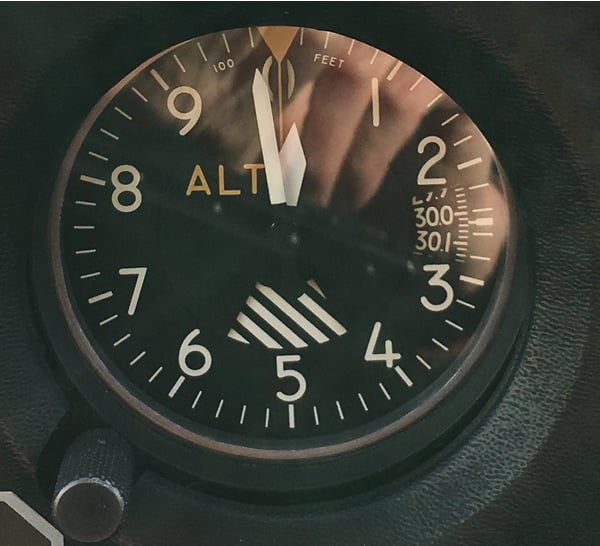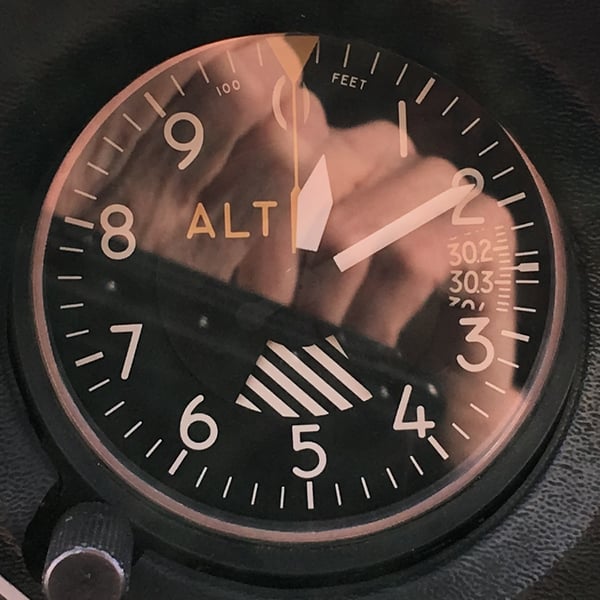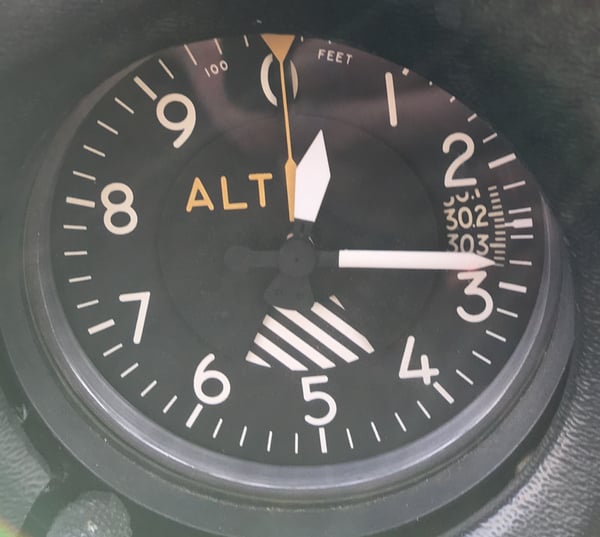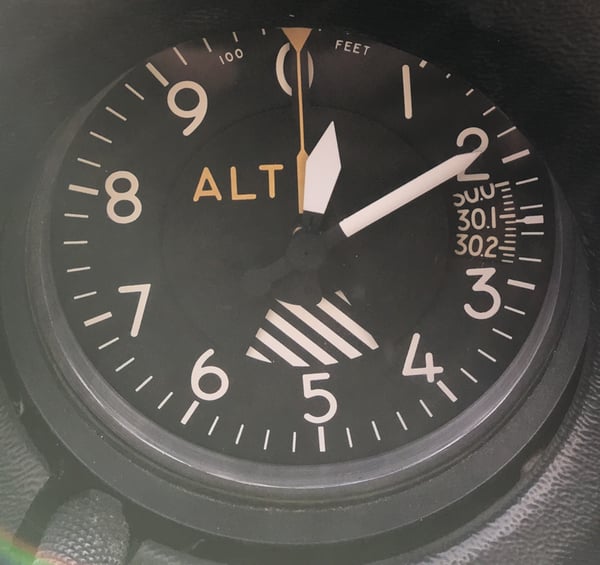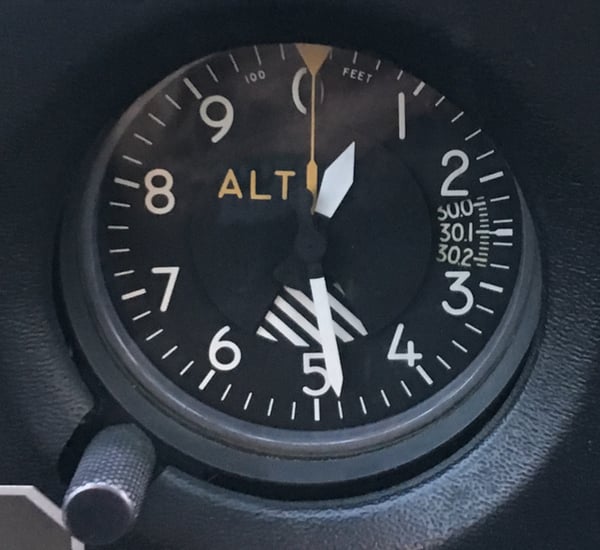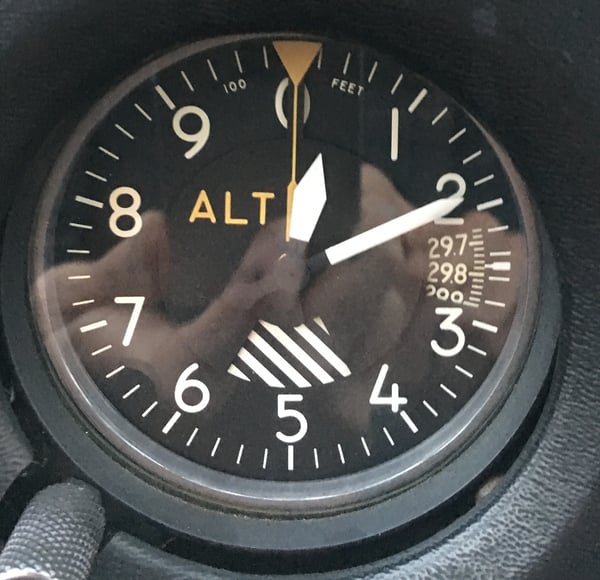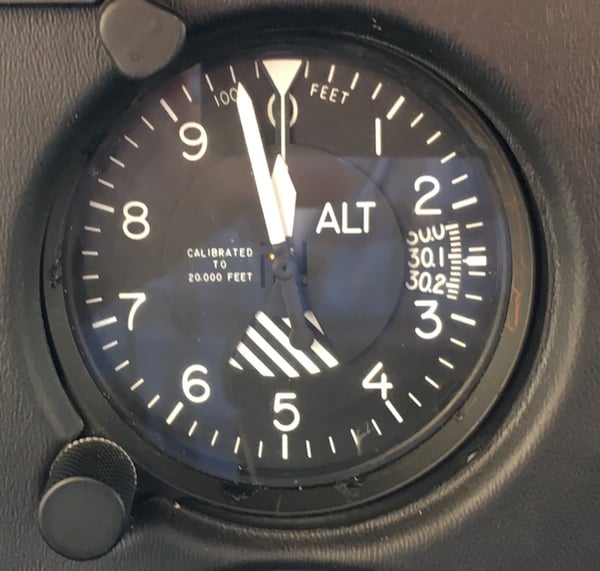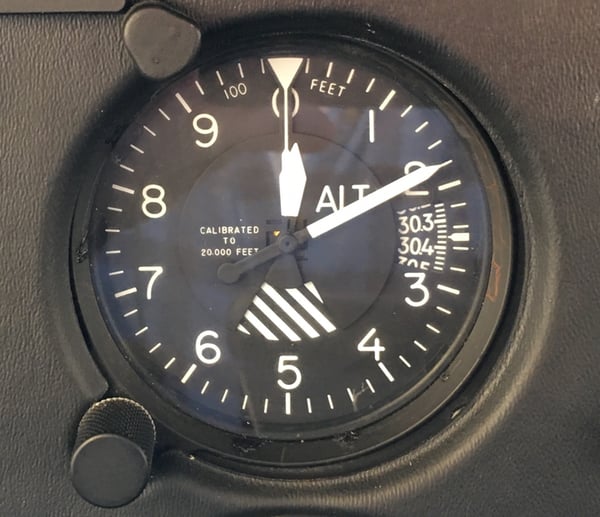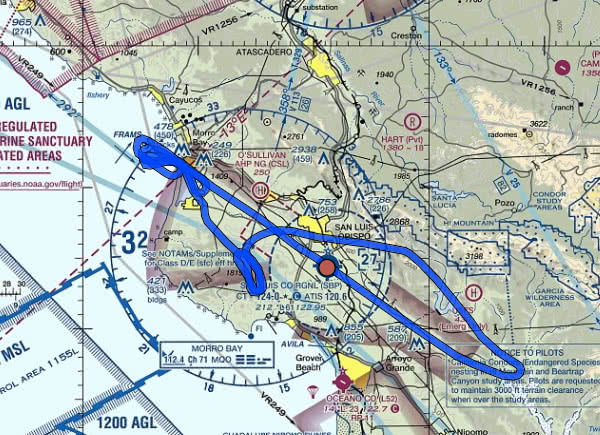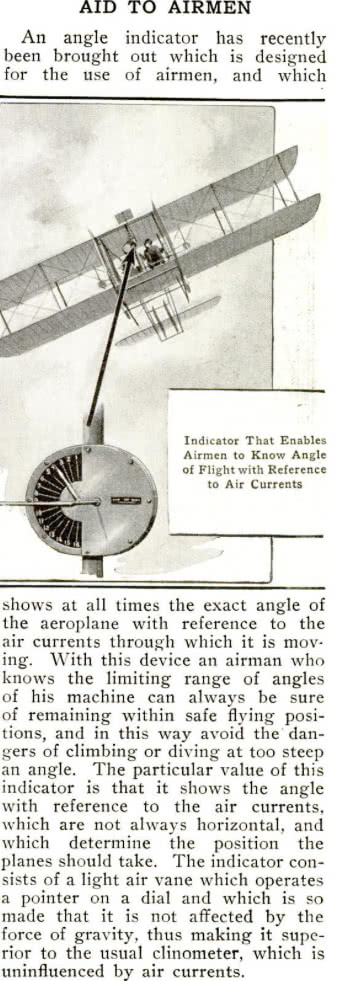This is a transcript of the excellent sUAS course that a private pilot can take to get their sUAS rating. If you are not a pilot, you might want to refer to these notes when studying for the Knowledge Test.
Overview
If you wish to operate small unmanned aircraft systems in the National Airspace System, or NAS, under 14 CFR part 107, this course will describe the certification and operational requirements you must satisfy.
This initial lesson defines the target audience and scope of this course.
The lesson then describes how the course prepares part 61 certificate holders (with a current flight review in accordance with 14 CFR part 61.56) to obtain a part 107 remote pilot certificate with a small unmanned aircraft system rating. The lesson also provides an overview of certification requirements for all other applicants.
The lesson then describes the structure for the remaining modules and lessons in this course.
If you wish to operate small unmanned aircraft systems in the National Airspace System, or NAS, under 14 CFR part 107, this course will describe the certification and operational requirements you must satisfy.
Primary Audience:
This course is designed for part 61 pilot certificate holders who have a current flight review (in accordance with 14 CFR part 61.56) and wish to obtain a part 107 remote pilot certificate with a small UAS rating.
References to “part 61 pilot certificate holders” specifically refer to holders of pilot certificates other than student pilot certificates. Part 61 pilot certificates include sport pilot, recreational pilot, private pilot, commercial pilot and air transport pilot certificates.
Secondary Audiences:
Applicants for a part 107 remote pilot certificate who do not hold a part 61 pilot certificate (or part 61 pilot certificate holders who do not meet the requirements of a current flight review or other provisions of 14 CFR part 61.56) may incorporate this training into their self-study curriculum to help prepare for the FAA Unmanned Aircraft General (UAG) Knowledge Test
Aviation Safety Inspectors (ASIs)
Those interested in learning more about 14 CFR part 107
This course assumes the learner has operational knowledge of 14 CFR part 61, Certification: Pilots, Flight Instructors, and Ground Instructors, and 14 CFR part 91, General Operating and Flight Rules.
The course focuses on the knowledge areas of 14 CFR part 107 that are beyond the operational knowledge of parts 61 and 91:
Applicable regulations relating to small UAS rating privileges, limitations, and flight operation
Effects of weather on small unmanned aircraft performance
Small unmanned aircraft loading
Determining the performance of small unmanned aircraft
Emergency procedures
Crew resource management
Maintenance and preflight inspection procedures
Eligibility for a Part 107 Remote Pilot Certificate
To apply for a part 107 remote pilot certificate with a small UAS rating, you must satisfy the following eligibility requirements:
Be at least 16 years old
Be able to read, speak, write, and understand the English language (FAA may make exceptions for medical reasons)
Be in a physical and mental condition that would not interfere with the safe operation of the small UAS
Sources: 14 CFR part 107.61; Advisory Circular (AC) 107-2, Small Unmanned Aircraft Systems (sUAS) (as amended)
Training and Knowledge Testing Requirements
Applicants for a part 107 remote pilot certificate with a small UAS rating must meet the requirements below in order to gain and retain the knowledge necessary to safely operate a small UAS in the NAS.
Applicant Initial Requirements
Recurrent Requirements (every 24 months)
Part 61 Pilot Certificate Holder with a Current Flight Review (per 14 CFR part 61.56)
This initial online course, or
The initial FAA Unmanned Aircraft General (UAG) Knowledge Test at a Knowledge Testing Center (KTC)
The recurrent online course, or
The recurrent FAA Unmanned Aircraft General (UAG) Knowledge Test at a Knowledge Testing Center (KTC)
Any Other Applicant
The initial FAA Unmanned Aircraft General (UAG) Knowledge Test at a Knowledge Testing Center (KTC)
The recurrent FAA Unmanned Aircraft General (UAG) Knowledge Test at a Knowledge Testing Center (KTC)
Visit the FAA Airman Testing website for more information about initial and recurrent requirements and for a list of Commercial Test Centers (Knowledge Testing Centers (KTCs)). All web resources described in this course are compiled on the Resources page for your future reference.
Testing: Part 61 Pilot Certificate Holders
If you are a part 61 pilot certificate holder and you have a current flight review (per 14 CFR part 61.56), successful completion of this course is your ONLY training and testing requirement. At the end of this course, complete the online knowledge check (exam) and print your completion certificate.
If you prefer, you have the option to complete the initial FAA Unmanned Aircraft General (UAG) Knowledge Test at a Knowledge Testing Center (KTC).
Testing: Non-Part 61 Pilot Certificate Holders
If you are not a part 61 pilot certificate holder (or do not hold a current flight review in accordance with 14 CFR part 61.56), you are required to demonstrate an understanding of all areas of knowledge specified in 14 CFR part 107.73(a) by passing the initial FAA Unmanned Aircraft General (UAG) Knowledge Test at an FAA-approved Knowledge Testing Center (KTC).
You may complete this course as one part of your independent study efforts to prepare for the FAA Unmanned Aircraft General (UAG) Knowledge Test. However, you are also encouraged to review reference materials that focus on the topic areas that are required in part 107.73(a), but are not covered in this course:
Airspace classification, operating requirements and flight restrictions affecting small unmanned aircraft operation
Aviation weather sources
Radio communication procedures
Physiological effects of drugs and alcohol
Aeronautical decision-making and judgment
Airport operations
Visit the Resources page to access the FAA Airman Testing website, UAS Airman Certification Standards (ACS), and other reference materials.
Self-Study Resources
To prepare for the FAA Unmanned Aircraft General (UAG) Knowledge Test at a Knowledge Testing Center (KTC), thoroughly review the materials provided on the Resources page for this course, including:
Regulations and policy documents, such as 14 CFR part 107 and Advisory Circular (AC) 107-2, Small Unmanned Aircraft Systems (sUAS) (as amended)
The FAA Airman Testing Standards Branch (AFS-630) Website that provides:
Reference Handbooks, such as the Aircraft Weight and Balance Handbook, Pilot’s Handbook of Aeronautical Knowledge (PHAK), Aeronautical Information Manual (AIM), and Risk Management Handbook
UAS Airman Certification Standards (ACS)
General information about the FAA Unmanned Aircraft General (UAG) Knowledge Test
Sample FAA Unmanned Aircraft General (UAG) Knowledge Test questions
The FAA Unmanned Aircraft Systems Website
This module focuses on certification requirements and other responsibilities related to the aircraft and Remote Pilot in Command. You must satisfy all such requirements before operating small unmanned aircraft systems in the National Airspace System as a Remote Pilot in Command.
This lesson focuses on the aircraft itself. The lesson defines the characteristics of small unmanned aircraft systems, as stipulated in part 107. The lesson then identifies exclusions from the requirements in part 107 for model aircraft, other equipment, and certain operating conditions. The lesson examines the requirements for registering small unmanned aircraft systems with the FAA, displaying appropriate registration markings (per 14 CFR parts 47 or 48), and ensuring that the aircraft is in condition for safe operation.
Aircraft and Remote Pilot in Command Requirements: Small UAS Characteristics and Requirements
Small Unmanned Aircraft Systems
14 CFR part 107 applies to the operation of certain civil small unmanned aircraft within the NAS. Except for certain excluded aircraft operations, any aircraft that meets the criteria below is considered a small unmanned aircraft.
Small unmanned aircraft:
Weigh less than 55 pounds (25 kg), including everything that is onboard or otherwise attached to the aircraft
Are operated without the possibility of direct human intervention from within or on the aircraft
A small unmanned aircraft system includes the unmanned aircraft itself and its associated elements that are required for safe operation, such as communication links and components that control the aircraft.
Not all small unmanned aircraft are subject to 14 CFR part 107.
Sources: 14 CFR parts 107.1 and 107.3; AC 107-2, Small Unmanned Aircraft Systems (sUAS) (as amended)
Registration of Small UAS
Like other types of civil aircraft, most small UAS must be registered with the FAA prior to operating in the NAS.
Owners must register any small UAS that is greater than 0.55 lbs and operated under part 107.
The owner must satisfy the registration requirements described in 14 CFR part 47, Aircraft Registration, or part 48, Registration and Marking Requirements for Small Unmanned Aircraft for commercial operations. If the owner is less than 13 years of age, then the small unmanned aircraft must be registered by a person who is at least 13 years of age.
14 CFR part 48 establishes the streamlined online registration option for a small UAS that will be operated only within the territorial limits of the United States.
Sources: 14 CFR parts 107.13 and 48.25; AC 107-2, Small Unmanned Aircraft Systems (sUAS) (as amended)
Foreign Aircraft Permit Requirements
A small UAS operation requires a Foreign Aircraft Permit if it involves a civil aircraft that is:
Registered in a foreign country, or
Owned, controlled, or operated by someone who is not a U.S. citizen or permanent resident.
If either criteria is met, the Remote PIC should obtain a Foreign Aircraft Permit pursuant to 14 CFR part 375.41 before conducting any operations. Application instructions are specified in 14 CFR part 375.43, Navigation of Foreign Civil Aircraft within the United States. Submit the application by electronic mail to the Department of Transportation (DOT) Office of International Aviation, Foreign Air Carrier Licensing Division.
Sources: 14 CFR part 107.13; AC 107-2, Small Unmanned Aircraft Systems (sUAS) (as amended)
Registration Markings
Before operation, mark the small UAS to identify that it is registered with the FAA.
The registration marking must be:
A unique identifier number. This is typically the registration number or N-number.
Legible and durable. Sample methods include engraving, permanent marker, or self-adhesive label.
Visible or accessible. The number may be enclosed in a compartment only if you can access the compartment without tools.
Sources: 14 CFR part 48; AC 107-2, Small Unmanned Aircraft Systems (sUAS) (as amended); FAA Small UAS Registration FAQs (https://www.faa.gov/uas/registration/faqs/#mou)
Condition for Safe Operation
An FAA airworthiness certification is not required for a small UAS. However, the Remote PIC must maintain and inspect the small UAS prior to each flight to ensure that it is in a condition for safe operation. For example, inspect all components of the small UAS for equipment damage or malfunctions.
Sources: 14 CFR part 107.15; AC 107-2, Small Unmanned Aircraft Systems (sUAS) (as amended)
Review Questions
Scenario 1: You are operating a 1280 g (2.8lb) quadcopter for your own enjoyment. Is this small UAS operation subject to 14 CFR part 107?
NO
Scenario 2: You have accepted football tickets in exchange for using your small UAS to videotape the field before and after the game. Is this small UAS operation subject to 14 CFR part 107?
YES
Scenario 3: You plan to operate a 33lb small UAS to capture aerial imagery over real estate for use in sales listings. Is this small UAS operation subject to 14 CFR part 107?
YES
Summary
This lesson examined the requirements for small UAS registration, markings, and condition.
In summary, 14 CFR part 107 applies to certain civil small unmanned aircraft operations conducted within the NAS for purposes other than hobby or recreation. Most small UAS must be registered with FAA and appropriately marked. Airworthiness certification is not required for small UAS. However, the Remote PIC must ensure that the small UAS is in a condition for safe operation prior to flight.
You should now be able to:
Define small unmanned aircraft systems (small UAS)
Identify exclusions from the requirements in part 107
Identify the requirements for small UAS registration, markings, and condition
Aircraft and Remote Pilot in Command Requirements: Remote Pilot in Command Responsibilities
In the previous lesson, you learned the characteristics of small unmanned aircraft systems and the requirements for registration, markings, and condition prior to flight.
This lesson defines the role of the Remote Pilot in Command. The lesson then identifies two crew roles that may support small unmanned aircraft system operations: a person manipulating the controls and a visual observer.
The lesson examines best practices for crew resource management to ensure the safety of small unmanned aircraft system operations.
The previous lesson described small UAS and the requirements for registration, markings, and condition prior to flight.
This lesson describes:
The role of the Remote Pilot in Command
Other supporting crew roles
Best practices for crew resource management
Defined Crew Roles in a Team Environment
A small UAS operation may involve one individual or a team of crewmembers. Part 107 defines the following small UAS crew roles:
Remote Pilot in Command (Remote PIC): A person who holds a current remote pilot certificate with a small UAS rating and has the final authority and responsibility for the operation and safety of the small UAS
Person manipulating the controls: A person controlling the small UAS under direct supervision of the Remote PIC
Visual observer: A person acting as a flight crewmember to help see and avoid air traffic or other objects in the sky, overhead, or on the ground
This section of the lesson examines each of these roles and describes best practices for crew resource management.
Remote Pilot in Command
The Remote PIC is directly responsible for and is the final authority as to the operation of the small UAS conducted under 14 CFR part 107.
He or she must:
Be designated before each flight (but can change during the flight)
Ensure that the operation:
Poses no undue hazard to people, aircraft, or property in the event of a loss of control of the aircraft for any reason
Complies with all applicable regulations of part 107
Operate the small unmanned aircraft to ensure compliance with all applicable provisions
Part 107 permits transfer of control of the small UAS between two or more certificated Remote PICs. The transfer of aircraft control (i.e. the Remote PIC designation) to each other must be accomplished while maintaining visual line of sight of the small UAS and without loss of control.
Sources: 14 CFR parts 107.19; AC 107-2, Small Unmanned Aircraft Systems (sUAS) (as amended)
Supporting Crew Roles: Person Manipulating the Controls
Person controlling a UAS
A non-certificated person may operate the small UAS under Part 107 only if:
He or she is directly supervised by the Remote PIC
and
The Remote PIC has the ability to immediately take direct control of the small UAS
The Remote PIC is ultimately responsible for identifying hazardous conditions. The Remote PIC’s ability to regain control of the small UAS is necessary to ensure that he or she can quickly intervene to ensure the safety of the flight and prevent a hazardous situation before an accident or incident occurs.
Source: AC 107-2, Small Unmanned Aircraft Systems (sUAS) (as amended)
Sample Methods to Regain Control
The ability for the Remote PIC to immediately take over the flight controls may be achieved by using a number of different methods.
For example, the Remote PIC could:
Stand close enough to physically take over the control station
Use a “buddy box” system with two control stations:
One for the person manipulating the flight controls
One that allows the Remote PIC to immediately override the other control station
Use a preprogrammed safe-mode system with “home” or “hover” functions
Source: AC 107-2, Small Unmanned Aircraft Systems (sUAS) (as amended)
Supporting Crew Roles: Visual Observer
The role of visual observers (VOs) is to alert the rest of the crew about potential hazards during operations involving a small UAS. The use of VOs is optional. However, the Remote PIC may use one or more VOs to supplement situational awareness and visual-line-of-sight responsibilities while the Remote PIC is conducting other mission-critical duties (such as checking displays).
The Remote PIC must make certain that all VOs:
Are positioned in a location where they are able to see the small UAS continuously and sufficiently to maintain visual line of sight
Possess a means to effectively communicate the small UAS position and the position of other aircraft to the Remote PIC and person manipulating the controls
Situational Awareness and Decision Making
The Remote PIC attains situational awareness by obtaining as much information as possible prior to a flight and becoming familiar with the performance capabilities of the small UAS, weather conditions, surrounding airspace, and Air Traffic Control (ATC) requirements. Sources of information include a weather briefing, ATC, FAA, local pilots, and landowners.
Technology, such as global positioning systems (GPS), mapping systems, and computer applications, can assist in collecting and managing information to improve your situational awareness and risk-based aeronautical decision making (ADM).
Source: PHAK, page 17-3; AC 60-22, Aeronautical Decision Making, Chapters 1, 3, and 4
Crew Resource Management
Crew resource management (CRM) is the effective use of all available resources—human, hardware, and information—prior to and during flight to ensure a successful outcome of the operation. The Remote PIC must integrate crew resource management techniques into all phases of the small UAS operation.
Many of the crew resource management techniques traditionally used in manned aircraft operations are also applicable for a small UAS, such as the ability to:
Delegate operational tasks and manage crewmembers
Recognize and address hazardous attitudes
Establish effective team communication procedures
Sources: AC 107-2, Small Unmanned Aircraft Systems (sUAS) (as amended); AC 60-22, Chapters 1 through 4; PHAK, page 17-4
Task Management
The Remote PIC identifies, delegates, and manages tasks for each small UAS operation.
Tasks can vary greatly depending on the complexity of the small UAS operation. Supporting crewmembers can help accomplish those tasks and ensure the safety of flight. For example, visual observers and other ground crew can provide valuable information about traffic, airspace, weather, equipment, and aircraft loading and performance.
The Remote PIC:
Assesses the operating environment (airspace, surrounding terrain, weather, hazards, etc.)
Determines the appropriate number of crewmembers that are needed to safely conduct a given operation. The Remote PIC must ensure sufficient crew support so that no one on the team becomes over-tasked, which increases the possibility of an incident or accident.
Informs participants of delegated tasks and sets expectations
Manages and supervises the crew to ensure that everyone completes their assigned tasks
Recognizing Hazardous Attitudes
Person with arms crossed and annoyed expression
Studies have identified five hazardous attitudes that can interfere with the ability to make sound decisions and properly exercise authority: anti-authority, impulsivity, invulnerability, machoism, and resignation.
Remote PICs should be alert for hazardous attitudes (in themselves or in other crewmembers), label it as hazardous, and correct the behavior.
Five Hazardous Attitudes
Attitude Motto Indicators Antidote
Anti-Authority “Don’t tell me what to do.” The person does not like or may resent anyone telling him or her what to do. The person may regard rules, regulations, and procedures as silly or unnecessary. (Note: it is always your prerogative to question authority if you feel it is in error.) “Follow the rules. They are usually right.”
Impulsivity “Do it quickly.” The person frequently feels the need to do something, anything, immediately. He or she does not stop to think about the best alternative and does the first thing that comes to mind. “Not so fast. Think first.”
Invulnerability “It won’t happen to me.” The person falsely believes that accidents happen to others, but never to him or her. The person knows accidents can happen and that anyone can be affected. However, the person never really feels or believes that he or she will be personally involved. Such people are more likely than others to take chances and increase risk. “It could happen to me.”
Machoism “I can do it—I’ll show them.” The person tries to prove that he or she is better than anyone else. The person takes risks to impress others. (Note: While this pattern is thought to be a male characteristic, women are equally susceptible.) “Taking chances is foolish.”
Resignation “What’s the use?” The person does not believe his or her actions make a difference in what happens. The person attributes outcomes to good or bad luck. He or she leaves the action to others, for better or worse. Sometimes, the person even goes along with unreasonable requests just to be a “nice guy.” “I’m not helpless. I can make a difference.”
Source: PHAK, 17-5
Effective Communication
The FAA requires that the Remote PIC and other crewmembers coordinate to:
Scan the airspace in the operational area for any potential collision hazard; and
Maintain awareness of the position of the small UAS through direct visual observation.
To achieve this goal, the Remote PIC should:
Foster an environment where open communication is encouraged and expected between the entire crew to maximize team performance
Establish effective communication procedures prior to flight
Select an appropriate method of communication, such as the use of hand-held radio or other effective means that would not create a distraction and allows all crewmembers to understand each other
Inform the crew as conditions change about any needed adjustments to ensure a safe outcome of the operation
Source: AC 107-2, Small Unmanned Aircraft Systems (sUAS) (as amended)
Review Questions
Crew Role 1: Who is responsible for ensuring that there are enough crewmembers for a given small UAS operation?
Remote Pilot in Command (Remote PIC)
Crew Role 2: Whose sole task during a small UAS operation is to watch the small UAS and report potential hazards to the rest of the crew?
Visual Observer
Crew Role 3: Which crewmember must hold a remote pilot certificate with a small UAS rating?
Remote Pilot in Command (Remote PIC)
Crew Role 4: Who is ultimately responsible for preventing a hazardous situation before an accident occurs?
Remote Pilot in Command (Remote PIC)
Crew Role 5: Which crewmember is required to be under the direct supervision of the Remote PIC when operating a small UAS?
Person manipulating the controls
Summary
This lesson described the Remote PIC’s responsibilities during a small UAS operation and best practices for crew resource management.
In summary, the Remote PIC holds a remote pilot certificate with a small UAS rating. He or she is ultimately responsible for the safe operation of the small UAS. The Remote PIC designates, prepares, and closely supervises any individuals serving as supporting crew members, such as the person manipulating the controls or visual observers.
You should now be able to:
Describe certification requirements for the Remote PIC
Define possible supporting crew roles in small UAS operations
Describe best practices for crew resource management
Rules for Safe Operation of Small UAS: Preflight Considerations
The previous modules examined the certification process, registration requirements, and crew roles for small UAS operations. This module focuses on requirements before, during, and after flight.
This lesson examines:
Recommended maintenance
Preflight inspection requirements
Loading considerations
Performance considerations
The effects of weather
The previous modules described the application process for a part 107 remote pilot certificate with a small unmanned aircraft system rating, small unmanned aircraft system characteristics and registration requirements, and crew roles.
This module describes operating rules for small unmanned aircraft systems operating in the National Airspace System. The Remote Pilot in Command has the final authority and responsibility to maintain and inspect the unmanned aircraft before flight, safely operate during flight, recognize abnormal and emergency situations, and report certain accidents.
This lesson focuses on preflight requirements. The lesson describes recommended maintenance and preflight inspection procedures to verify that the aircraft is in a condition for safe operation.
The lesson then describes the restrictions and best practices for safe loading of small unmanned aircraft systems.
The lesson examines factors to consider when evaluating performance in flight and the effects of weather.
Maintenance Requirements
Crewmembers check the condition of unmanned aircraft before flight
Maintenance for a small UAS includes scheduled and unscheduled overhaul, repair, inspection, modification, replacement, and system software upgrades for the unmanned aircraft itself and all components necessary for flight.
This first section of the lesson examines maintenance requirements and best practices.
Source: AC 107-2, Small Unmanned Aircraft Systems (sUAS) (as amended)
Manufacturers may recommend a maintenance or replacement schedule for the unmanned aircraft and system components based on time-in-service limits and other factors. Follow all manufacturer maintenance recommendations to achieve the longest and safest service life of the small UAS.
If the small UAS or component manufacturer does not provide scheduled maintenance instructions, it is recommended that you establish your own scheduled maintenance protocol.
For example:
Document any repair, modification, overhaul, or replacement of a system component resulting from normal flight operations
Record the time-in-service for that component at the time of the maintenance procedure
Assess these records over time to establish a reliable maintenance schedule for the small UAS and its components
Source: AC 107-2, Small Unmanned Aircraft Systems (sUAS) (as amended)
Unscheduled Maintenance
During the course of a preflight inspection, you may discover that a small UAS component requires some form of maintenance outside of the scheduled maintenance period.
For example, a small UAS component may require servicing (such as lubrication), repair, modification, overhaul, or replacement as a result of normal or abnormal flight operations. Or, the small UAS manufacturer or component manufacturer may require an unscheduled system software update to correct a problem.
In the event such a condition is found, do not conduct flight operations until the discrepancy is corrected.
Source: AC 107-2, Small Unmanned Aircraft Systems (sUAS) (as amended)
Performing Maintenance
In some instances, the small UAS or component manufacturer may require certain maintenance tasks be performed by the manufacturer or by a person or facility (personnel) specified by the manufacturer.
It is highly recommended that the maintenance be performed in accordance with the manufacturer’s instructions. However, if you decide not to use the manufacturer or the personnel recommended by the manufacturer and you are unable to perform the required maintenance yourself, you should:
Solicit the expertise of maintenance personnel familiar with the specific small UAS and its components
Consider using certificated maintenance providers, such as repair stations, holders of mechanic and repairman certificates, and persons working under the supervision of a mechanic or repairman
If you or the maintenance personnel are unable to repair, modify, or overhaul a small UAS or component back to its safe operational specification, then it is advisable to replace the small UAS or component with one that is in a condition for safe operation.
Complete all required maintenance before each flight—preferably in accordance with the manufacturer’s instructions or, in lieu of that, within known industry best practices.
Preflight Inspection
Before beginning any flight operation involving a small UAS:
Assess the operating environment
Inform any supporting crewmembers about the operation and their roles
Inspect the small UAS to ensure that it is in a condition for safe operation
Maintain documents required in the event of an on-site FAA inspection
Sources: 14 CFR parts 107.15 and 107.49; AC 107-2, Small Unmanned Aircraft Systems (sUAS) (as amended)
Operating Environment
Before a small UAS operation, assess the operating environment.
The assessment must include, but is not limited to:
Local weather conditions
Local airspace and any flight restrictions
The location of persons and property on the surface
Other ground hazards
Source: AC 107-2, Small Unmanned Aircraft Systems (sUAS) (as amended)
Information for the Crew
Before any small UAS operation, at a minimum, ensure that all persons directly participating in the small UAS operation are informed about:
Operating conditions
Emergency procedures
Contingency procedures
Roles and responsibilities of each person involved in the operation
Potential hazards
Source: AC 107-2, Small Unmanned Aircraft Systems (sUAS) (as amended)
Condition of Aircraft
Before any small UAS operation, inspect the aircraft for equipment damage or malfunctions.
For example, ensure that:
All control links between the control station and the small unmanned aircraft are working properly
There is sufficient power to continue controlled flight operations to a normal landing
Any object attached or carried by the small unmanned aircraft is secure and does not adversely affect the flight characteristics or controllability of the aircraft
The unique identifier is readily accessible and visible upon inspection of the small unmanned aircraft
Benefits of Recordkeeping
Careful recordkeeping can be highly beneficial for small UAS owners and operators. For example, recordkeeping provides essential safety support for commercial operators who may experience rapidly accumulated flight operational hours/cycles.
Consider maintaining a hardcopy and/or electronic logbook of all periodic inspections, maintenance, preventative maintenance, repairs, and alterations performed on the small UAS.
Such records should include all components of the sUAS, including the:
Small unmanned aircraft itself
Control station
Launch and recovery equipment
Data link equipment
Payload
Any other components required to safely operate the small UAS
FAA Inspections
You must make available to the FAA, upon request, the small UAS for inspection or testing.
In addition, you must verify before flight that all required documentation is physically or electronically available in the event of an on-site FAA inspection. Such documentation may include:
Pilot certificate
Aircraft registration
Any necessary waiver, authorization, or exemption
Other documentation related to the operation
Loading and Performance
Prior to each flight, the Remote PIC must ensure that any object attached to or carried by the small unmanned aircraft is secure and does not adversely affect the flight characteristics or controllability of the aircraft.
Source: 14 CFR part 107.49; AC 107-2, Small Unmanned Aircraft Systems (sUAS) (as amended)
Loading Considerations: General Weight and Balance
As with any aircraft, compliance with weight and balance limits is critical to the safety of flight for a small UAS. An unmanned aircraft that is loaded out of balance may exhibit unexpected and unsafe flight characteristics.
Before any flight, verify that the unmanned aircraft is correctly loaded by determining the weight and balance condition.
Review any available manufacturer weight and balance data and follow all warnings, cautions, notes, and limitations
If the manufacturer does not provide specific weight and balance data, apply general weight and balance principals to determine limits for a given flight. For example, add weight to the unmanned aircraft in a manner that does not adversely affect the aircraft’s center of gravity (CG) location—a point at which the unmanned aircraft would balance if it were suspended at that point.
Sources: PHAK; FAA-H-8083-1, Weight & Balance Handbook, 4-4-5
Factors that Affect Maximum Gross Takeoff Weight
Although a maximum gross takeoff weight is normally specified for a given unmanned aircraft, the aircraft may not be able to launch with this load under all conditions. Or if it does become airborne, the unmanned aircraft may exhibit unexpected and unusually poor flight characteristics.
Factors that may require a reduction in weight prior to flight include:
High density altitude conditions
High elevations
High air temperatures
High humidity
Runway/launch area length
Surface
Slope
Surface wind
Presence of obstacles
Sources: AC 107-2, Small Unmanned Aircraft Systems (sUAS) (as amended); PHAK
Common Performance Deficiencies of Overloaded Aircraft
Excessive weight reduces the flight performance in almost every respect. In addition, operating above the maximum weight limitation can compromise the structural integrity of an unmanned aircraft.
The most common performance deficiencies of an overloaded aircraft are:
Reduced rate of climb
Lower maximum altitude
Shorter endurance
Reduced maneuverability
Loading Considerations: Effects of Weight Changes
Weight changes have a direct effect on aircraft performance.
Fuel burn is the most common weight change that takes place during flight.
For battery-powered unmanned aircraft, weight change during flight may occur when expendable items are used on board (e.g., water or other liquids dispensed for authorized agricultural use). Changes of mounted equipment between flights, such as the installation of cameras, battery packs, or other instruments, may also affect the weight and balance and performance of a small UAS.
Sources: AC 107-2, Small Unmanned Aircraft Systems (sUAS) (as amended); PHAK
Loading Considerations: Effects of Load Factor
Unmanned airplane performance can be decreased due to an increase in load factor when the airplane is operated in maneuvers other than straight and level flight.
The load factor increases at a terrific rate after a bank has reached 45° or 50°. The load factor for any aircraft in a coordinated level turn at 60° bank is 2 Gs. The load factor in an 80° bank is 5.76 Gs. The wing must produce lift equal to these load factors if altitude is to be maintained. The Remote PIC should be mindful of the increased load factor and its possible effects on the aircraft’s structural integrity and the results of an increase in stall speed.
As with manned aircraft, an unmanned airplane will stall when critical angle of attack is exceeded. Due to the low altitude operating environment, consideration should be given to ensure aircraft control is maintained and the aircraft isn’t operated outside its performance limits.
Carriage of Hazardous Material
A small unmanned aircraft may not carry hazardous material as defined in 49 CFR part 171.8:
Hazardous material means, “a substance or material that the Secretary of Transportation has determined is capable of posing an unreasonable risk to health, safety, and property when transported in commerce, and has designated as hazardous under section 5103 of Federal hazardous materials transportation law (49 U.S.C. 5103). The term includes hazardous substances, hazardous wastes, marine pollutants, elevated temperature materials, materials designated as hazardous in the Hazardous Materials Table (see 49 CFR 172.101), and materials that meet the defining criteria for hazard classes and divisions in part 173 of subchapter C of this chapter.”
Sources: 14 CFR part 107.36; 49 CFR part 171.8
Carriage of Lithium Batteries
Lithium batteries that are installed in a small UAS for power during the operation are not considered a hazardous material under part 107.
However, spare (uninstalled) lithium batteries would meet the definition of hazardous material and may not be carried as cargo on the small UAS.
Determining Performance: Sources of Performance Data
Performance or operational information may be provided by the manufacturer in the form of an Aircraft Flight Manual, Pilot’s Operating Handbook, or owner’s manual. Follow all manufacturer recommendations for evaluating performance to ensure safe and efficient operation.
Even when specific performance data is not provided, the Remote PIC should be familiar with:
The operating environment
All available information regarding the safe and manufacturer’s recommended operation of the small UAS
Source: PHAK
Remote PIC Responsibilities for Determining Performance
The Remote PIC is responsible for ensuring that every flight can be accomplished safely, does not pose an undue hazard, and does not increase the likelihood of a loss of positive control.
Consider how your decisions affect the safety of flight. For example:
If you attempt flight in windy conditions, the unmanned aircraft may require an unusually high power setting to ascend. This action may cause a rapid depletion of battery power and result in a failure mode.
If you attempt flight in wintery weather conditions, ice may accumulate on the unmanned aircraft’s surface. Ice increases the weight and adversely affects performance characteristics of the small unmanned aircraft.
Due to the diversity and rapidly-evolving nature of small UAS operations, individual Remote PICs have flexibility to determine what equipage methods, if any, mitigate risk sufficiently to meet performance-based requirements, such as the prohibition on creating an undue hazard if there is a loss of aircraft control.
Determining Performance: Operational Data
The FAA acknowledges that some manufacturers provide comprehensive operational data and manuals, such as Aircraft Flight Manuals or Pilot’s Operating Handbooks, and others do not. When operational data is provided, follow the manufacturer’s instructions and recommendations.
Even when operational data is not supplied by the manufacturer, the Remote PIC can better understand the unmanned aircraft’s capabilities and limitations by establishing a process for tracking malfunctions, defects, and flight characteristics in various environments and conditions. Use this operational data to establish a baseline for determining performance, reliability, and risk assessment for your particular system.
Effects of Weather on Performance
Field with storm clouds approaching
Even though small UAS operations are often conducted at very low altitudes, weather factors can greatly influence performance and safety of flight.
Specifically, factors that affect small UAS performance and risk management include:
Atmospheric pressure and stability
Wind and currents
Uneven surface heating
Visibility and cloud clearance
As with any flight, the Remote PIC should check and consider the weather conditions prior to and during every small UAS flight.
Wind
Wind and currents can affect small UAS performance and maneuverability during all phases of flight. Be vigilant when operating a small UAS at low altitudes, in confined areas, near buildings or other manmade structures, and near natural obstructions (such as mountains, bluffs, or canyons).
Consider the following effects of wind on performance:
Obstructions on the ground affect the flow of wind, may create rapidly changing wind gusts, and can be an unseen danger
The intensity of the turbulence associated with ground obstructions depends on the size of the obstacle and the primary velocity of the wind
Even when operating in an open field, wind blowing against surrounding trees can create significant low level turbulence
High winds may make it difficult to maintain a geographical position in flight and may consume more battery power
Source: PHAK
Example: Operations Near Buildings
Remember that local conditions, geological features, and other anomalies can change the wind direction and speed close to the Earth’s surface.
For example, when operating close to a building, winds blowing against the building could cause strong updrafts that can result in ballooning or a loss of positive control. On the other hand, winds blowing over the building from the opposite side can cause significant downdrafts that can have a dramatic sinking effect on the unmanned aircraft.
Currents
Different surfaces radiate heat in varying amounts.
The resulting uneven heating of the air creates small areas of local circulation called convective currents. Convective currents can cause bumpy, turbulent air that can dramatically affect the Remote PIC’s ability to control unmanned aircraft at lower altitudes.
For example:
Plowed ground, rocks, sand, and barren land give off a large amount of heat and are likely to result in updrafts
Water, trees, and other areas of vegetation tend to absorb and retain heat and are likely to result in downdrafts
Source: PHAK
Visibility and Clouds
As in manned aircraft operations, good visibility and safe distance from clouds enhances the Remote PIC’s ability to see and avoid other aircraft. Similarly, good visibility and cloud clearance may be the only means for other aircraft to see and avoid the unmanned aircraft.
The regulatory requirements for visibility and cloud clearance are discussed in a later module. But it should be noted here that adherence to the regulatory requirements in conjunction with good airmanship and effective scanning techniques can preclude in-flight collisions. And collision avoidance is an essential aspect to the safe integration of a small UAS into the NAS.
Source: PHAK
Review Questions
Which of the following source of information should you consult first when determining what maintenance should be performed on a small UAS or its components?
Manufacturer guidance
How often is the Remote PIC required to inspect the small UAS to ensure that it is in a condition for safe operation?
Before each flight
When loading cameras or other equipment on a small UAS, mount the items in a manner that:
A Is visible to the visual observer or other crewmembers.
B Does not adversely affect the center of gravity.
*C Can be easily removed without the use of tools.
Which of the following considerations is most relevant to a Remote PIC when evaluating unmanned aircraft performance?
*A Current weather conditions
B The number of available ground crew
C The type of the small UAS operation
Summary
This lesson examined preflight requirements for a small UAS.
In summary, the Remote PIC is responsible for maintenance and pre-flight inspection of the small UAS, safe loading techniques, and continuous assessment of performance in flight.
You should now be able to describe:
Recommended maintenance procedures for a small UAS
Inspection requirements to verify that the small UAS is in a condition for safe operation
Considerations for safe loading of unmanned aircraft
Procedures for evaluating performance
The effects of weather on performance
Rules for Safe Operation of Small UAS: Operating Rules
Introduction
The previous lesson examined preflight requirements for small unmanned aircraft system operations, including scheduled and unscheduled maintenance, preflight inspection procedures, loading considerations, and factors that could affect aircraft performance.
This lesson focuses on rules for safe operation of small unmanned aircraft systems in the National Airspace System. The lesson describes operational requirements and limitations and available certificates of waiver for select requirements in 14 CFR part 107.
Daylight Only Operations
14 CFR part 107 prohibits operation of a small UAS at night, defined in 14 CFR part 1 as the time between the end of evening civil twilight and the beginning of morning civil twilight, as published in the Federal Air Almanac, and converted to local time.
The Federal Air Almanac provides tables to determine sunrise and sunset at various latitudes. For example:
In the contiguous United States, evening civil twilight is the period of sunset until 30 minutes after sunset and morning civil twilight is the period of 30 minutes prior to sunrise until sunrise
In Alaska, the definition of civil twilight differs and is described in the Federal Air Almanac
Visit the Resources page to access the Naval Observatory website where you can download these tables and customize them for your location.
Source: 14 CFR part 107.29; AC 107-2, Small Unmanned Aircraft Systems (sUAS) (as amended)
Daylight: Operations in Civil Twilight
When small UAS operations are conducted during civil twilight, the small UAS must be equipped with anti-collision lights that are capable of being visible for at least 3 statute miles from the control station.
However, the Remote PIC may reduce the intensity of the lighting if he or she has determined that it would be in the interest of operational safety to do so. For example, the Remote PIC may momentarily reduce the lighting intensity if it impacts his or her night-vision.
Source: 14 CFR part 107.29; AC 107-2, Small Unmanned Aircraft Systems (sUAS) (as amended)
Visual Line of Sight
The small unmanned aircraft must remain within visual line-of-sight (VLOS) of flight crewmembers. Visual line of sight means any flight crewmember (i.e. the Remote PIC; person manipulating the controls; and visual observers, if used) is capable of seeing the aircraft with vision unaided by any device other than corrective lenses (spectacles or contact lenses).
Crewmembers must operate within the following limitations.
Minimum visibility, as observed from the location of the control station, must be no less than 3 statute miles
Minimum distance from clouds must be no less than 500 feet below a cloud and 2000 feet horizontally from the cloud
Crewmembers must be able to see the small unmanned aircraft at all times during flight. Therefore, the small unmanned aircraft must be operated closely enough to the control station to ensure visibility requirements are met during small unmanned aircraft operations.
Sources: 14 CFR parts 107.31 and 107.51; AC 107-2, Small Unmanned Aircraft Systems (sUAS) (as amended)
Restrictions on Vision Aids
Visual line of sight must be accomplished and maintained by unaided vision, except vision that is corrected by the use of eyeglasses (spectacles) or contact lenses.
Vision aids, such as binoculars, may be used only momentarily to enhance situational awareness. For example, the Remote PIC, person manipulating the controls, or visual observer may use vision aids briefly to avoid flying over persons or to avoid conflicting with other aircraft.
Regaining Visual Line of Sight
The Remote PIC or person manipulating the controls may have brief moments in which he or she is not looking directly at or cannot see the small unmanned aircraft, but still retains the capability to see it or quickly maneuver it back to line of sight.
These moments should be for:
The safety of the operation, such as briefly looking down at the control station or scanning the airspace. To scan for traffic, the crew should systematically focus on different segments of the sky for short intervals.
Operational necessity, such as intentionally maneuvering the aircraft for a brief period behind an obstruction
There is no specific time interval for which interruption of visual contact is permissible. Such parameters could potentially allow a hazardous interruption or prohibit a reasonable one.
The Remote PIC or person manipulating the controls must attempt to regain visual line of sight:
Immediately, if he or she unintentionally loses sight of the aircraft
As soon as practicable, if he or she loses sight of the aircraft for operational necessity
Operating Limitations for Small Unmanned Aircraft
The small unmanned aircraft must be operated in accordance with the following limitations:
Cannot be flown faster than a groundspeed of 87 knots (100 miles per hour)
Cannot be flown higher than 400 feet above ground level (AGL) unless flown within a 400-foot radius of a structure and is not flown higher than 400 feet above the structure’s immediate uppermost limit
Sources: 14 CFR part 107.51; AC 107-2, Small Unmanned Aircraft Systems (sUAS) (as amended)
Operation near Aircraft: Right of Way Rules
No person may operate a small unmanned aircraft in a manner that interferes with operations and traffic patterns at any airport, heliport, or seaplane base. The Remote PIC also has a responsibility to remain clear of and yield right-of-way to all other aircraft, manned or unmanned, and avoid other potential hazards that may affect the Remote PIC’s operation of the aircraft. This is traditionally referred to as “see and avoid”.
To satisfy this responsibility, the Remote PIC must:
Know the location and flight path of his or her small unmanned aircraft at all times
Be aware of other aircraft, persons, and property in the vicinity of the operating area
Be able to maneuver the small unmanned aircraft to:
Avoid a collision
Prevent other aircraft from having to take evasive action
Avoid operating anywhere where the presence of his or her unmanned aircraft may interfere with operations at the airport, such as approach corridors, taxiways, runways, or helipads
Yield right-of-way to all other aircraft, including aircraft operating on the surface of the airport
First-person view camera cannot satisfy ‘‘see-and-avoid’’ requirement. However, such cameras can be used as long as the “see-and-avoid” requirement is satisfied in other ways.
Sources: 14 CFR parts 107.37 and 43; AC 107-2, Small Unmanned Aircraft Systems (sUAS) (as amended)
Operation in Certain Airspace
Many small UAS operations can be conducted in uncontrolled, Class G airspace without further permission or authorization. However, operations require prior authorization from Air Traffic Control (ATC) in Class B, C, and D airspace and within the lateral boundaries of the surface area of Class E airspace designated for an airport.
It is incumbent on the Remote PIC to be aware of the type of airspace in which they will be operating their small UAS. As with other flight operations, the Remote PIC should refer to current aeronautical charts and other navigation tools to determine position and related airspace.
Notices to Airmen (NOTAMs)
Smartphone displaying the FAA mobile application
Temporary Flight Restrictions (TFRs) are inclusive of small UAS operations. For that reason, it is necessary for the Remote PIC to check for Notices to Airmen (NOTAMs) before each flight to determine if there are any applicable airspace restrictions.
Common TFRs that relate to small UAS operations include, but are not limited to:
Presidential TFRs and NOTAMs
Emergency response TFRs and NOTAMs
Standing TFRs that go into and out of effect (e.g., stadiums for sporting events)
Operation in Prohibited or Restricted Areas or Areas Designated in NOTAMs
Cover of 14 CFR, labeled with parts 99.7 and 91 subpart B
No person may operate a small unmanned aircraft in prohibited or restricted areas unless that person has permission from the using or controlling agency, as appropriate.
The Remote PIC must comply with the following provisions:
The provisions of 14 CFR part 99.7, Special Security Instructions
The following provisions of 14 CFR part 91 subpart B, Flight Rules:
14 CFR part 91.137 Temporary flight restrictions in the vicinity of disaster/hazard areas
14 CFR part 91.138 Temporary flight restrictions in national disaster areas in the State of Hawaii
14 CFR part 91.139 Emergency air traffic rules
14 CFR part 91.141 Flight restrictions in the proximity of the Presidential and other parties
14 CFR part 91.143 Flight limitation in the proximity of space flight operations
14 CFR part 91.144 Temporary restriction on flight operations during abnormally high barometric pressure conditions
14 CFR part 91.145 Management of aircraft operations in the vicinity of aerial demonstrations and major sporting events
Visit the Resources page to access these provisions.
Sources: 14 CFR parts 107.45 and 107.47; AC 107-2, Small Unmanned Aircraft Systems (sUAS) (as amended)
Obtaining Airspace Authorizations
ATC has the authority to approve or deny aircraft operations based on traffic density, controller workload, communication issues, or any other type of operations that could potentially impact the safe and expeditious flow of air traffic in that airspace.
When ATC authorization is required, it must be requested and granted before any operation in that airspace. There is currently no established timeline for approval after ATC permission has been requested because the time required for approval will vary based on the resources available at the ATC facility and the complexity and safety issues raised by each specific request.
For this reason, Remote PICs should request ATC authorization as soon as possible prior to any operation in Class B, C and D airspace and within the lateral boundaries of the surface area of Class E airspace designated for an airport.
Source: AC 107-2, Small Unmanned Aircraft Systems (sUAS) (as amended)
Frequency Spectrum
Most small UAS use radio frequencies to establish the data link between the control station and the small unmanned aircraft.
Considerations for radio frequencies used in small UAS operations include:
Frequency interference
Line of sight/obstructions
Source: AC 107-2, Small Unmanned Aircraft Systems (sUAS) (as amended)
Frequency Interference
Many small UAS utilize the same unlicensed frequency bands for control and command and video links
These unlicensed radio frequency bands used during a small UAS operation are regulated by the Federal Communications Commission (FCC) and may require an FCC license.
These same frequency bands are also commonly used for wifi and other remote/wireless devices. Frequency congestion and interference may affect operation of the small UAS.
Before conducting a small UAS operation, consult the manufacturer’s operating manual to determine the frequencies for your specific small UAS.
Source: AC 107-2, Small Unmanned Aircraft Systems (sUAS) (as amended)
Line of Sight and Frequency Obstructions
Small UAS radio frequency bands are considered line of sight.
Be aware that the command and control link between the control station and the small unmanned aircraft may not work properly when barriers are between the control station and the unmanned aircraft.
Source: AC 107-2, Small Unmanned Aircraft Systems (sUAS) (as amended)
Spectrum Authorization
Radio transmissions, such as those used to control an unmanned aircraft and to downlink real-time video, must use frequency bands that are approved for use by the operating agency. Operations on licensed band frequencies require a user-specific license for all civil users, except federal agencies, to be obtained from the FCC.
Source: AC 107-2, Small Unmanned Aircraft Systems (sUAS) (as amended)
No Operation Over People
You may not operate a small unmanned aircraft directly over another person unless that person is:
Directly involved in the operation (such as a visual observer or other crewmember)
OR
Within a safe cover, such as inside a stationary vehicle or a protective structure that would protect a person from harm if the small unmanned aircraft were to crash into that structure
Protecting Non-Participants
To comply with limitations on small UAS operations near persons not participating in the operation, the Remote PIC should employ the strategies described below.
Select an appropriate operational area for the small UAS flight
Ideally, select an operational area (site) that is sparsely populated
If operating in populated/inhabited areas, make a plan to keep non-participants clear, indoors, or under cover
If operating from a moving vehicle, choose a sparsely populated (or unpopulated) area and make a plan to keep the small UAS clear of anyone who may approach
Adopt an appropriate operating distance from non-participants
Take reasonable precautions to keep the operational area free of non-participants
Operation from Moving Vehicles or Aircraft
14 CFR part 107 permits operation of a small UAS from a moving land or water-borne vehicle over a sparsely populated (or unpopulated) area. However, operation from a moving aircraft is prohibited.
Additionally, small unmanned aircraft that are transporting another person’s property for compensation or hire may not be operated from any moving vehicle.
Source: 14 CFR part 107.25; AC 107-2, Small Unmanned Aircraft Systems (sUAS) (as amended)
Transporting Another Person’s Property
You may also operate a small UAS to transport another person’s property (cargo) for compensation or hire provided you comply with the additional requirements described below.
The total weight of the small UAS (including the cargo) must remain below 55lbs
The small UAS operation must be within the boundaries of a State (intrastate)
No items may be dropped from the small unmanned aircraft in a manner that creates an undue hazard to persons or property
You may not operate the small UAS from a moving land vehicle or water-born vessel
Moving Vehicles: Part 107 Restrictions
Operations from moving vehicles are subject to the same restrictions that apply to all other part 107 small UAS operations.
Examples include:
Visual Line of Sight: The Remote PIC (and the person manipulating the controls, if applicable) operating from a moving vehicle or watercraft is still required to maintain visual line of sight for the small UAS
Operations over People: Operations are still prohibited over persons not directly involved in the operation of the small UAS, unless under safe cover. The Remote PIC is also responsible for ensuring that no person is subject to undue risk as a result of loss of control of the small unmanned aircraft for any reason.
Communication: The visual observer and Remote PIC must still maintain effective communication
No Careless or Reckless Operation: Part 107 also prohibits careless or reckless operation of a small UAS. Operating a small UAS while driving a moving vehicle is considered to be careless or reckless because the driver’s attention would be hazardously divided. Therefore, the driver of a land vehicle or the operator of a water-borne vehicle must not serve as the Remote PIC, person manipulating the controls, or visual observer.
Source: 14 CFR part 107.25
Moving Vehicles: State and Local Traffic Laws
Other laws, such as State and local traffic laws, may also apply to the conduct of a person driving a vehicle.
Many states currently prohibit distracted driving and state or local laws may also be amended in the future to impose restrictions on how cars and public roads may be used with regard to a small UAS operation. The FAA emphasizes that people involved in a small UAS operation are responsible for complying with all applicable laws and not just the FAA’s regulations.
No Operations While Impaired
Part 107 does not allow operation of a small UAS if the Remote PIC, person manipulating the controls, or visual observer is unable to safely carry out his or her duties and responsibilities.
While drug and alcohol use are known to impair judgment, certain over-the-counter medications and medical conditions could also affect the ability to safely operate a small unmanned aircraft. For example, certain antihistamines and decongestants may cause drowsiness.
You may not directly participate in the operation of a small UAS if you know or have reason to know that you have a physical or mental condition that would interfere with the safe operation of the small UAS.
Impaired Judgement: Prohibition Thresholds
Part 107 prohibits a person from serving as any small UAS crewmember if he or she:
Consumed any alcoholic beverage within the preceding 8 hours
Is under the influence of alcohol
Has a blood alcohol concentration of .04% or greater
Is using a drug that affects the person’s mental or physical capabilities
No Hazardous Operation
No person may operate a small UAS in a careless or reckless manner so as to endanger another person’s life or property. Part 107 also prohibits allowing an object to be dropped from a small UAS in a manner that creates an undue hazard to persons or property.
Examples of hazardous operation include, but are not limited to:
Operations that interfere with manned aircraft operations
Operating a small UAS over persons not directly participating in the operation
Loading the small UAS beyond its capabilities to the point of losing control
Privacy and Other Considerations
Other laws, such as State and local privacy laws, may apply to small UAS operations. The Remote PIC is responsible for reviewing and complying with such laws prior to operation.
In addition, Remote PICs are encouraged to review the Department of Commerce National Telecommunications and Information Administration (NTIA) best practices that address privacy, transparency and accountability issues related to private and commercial use of a small UAS.
Certificates of Waiver
If the Remote PIC determines that the operation cannot be conducted within the regulatory structure of part 107, he or she is responsible for applying for a Certificate of Waiver in accordance with 14 CFR part 107.200 and proposing a safe alternative to the operation.
The application for a Certificate of Waiver must be submitted at least 90 days prior to planned use.
This Certificate of Waiver will allow a small UAS operation to deviate from certain provisions of part 107 as long as the FAA finds that the proposed operation can be safely conducted under the terms of that Certificate of Waiver.
Visit the Resources page to access the online application for a UAS Certificate of Waiver.
Waivable Sections of Part 107
Your request for a waiver may be granted if the FAA finds that the proposed operation can be safely conducted under the terms of that Certificate of Waiver.
A list of the waivable sections of part 107 can be found in 14 CFR part 107.205 and are listed below:
§ 107.25 Operation from a moving vehicle or aircraft. However, no waiver of this provision will be issued to allow the carriage of property of another by aircraft for compensation or hire
§ 107.29 Daylight operation
§ 107.31 Visual line of sight aircraft operation. However, no waiver of this provision will be issued to allow the carriage of property of another by aircraft for compensation or hire
§ 107.33 Visual observer
§ 107.35 Operation of multiple small unmanned aircraft systems
§ 107.37(a) Yielding the right of way
§ 107.39 Operation over people
§ 107.41 Operation in certain airspace
§ 107.51 Operating limitations for small unmanned aircraft
FAA Waiver Review Process
After submitting your online application, the FAA will determine if the proposed operation can be safely conducted under the terms of that Certificate of Waiver.
If the application is denied, you will receive notification stating the reasons for denial.
If the waiver or authorization is granted, you will receive direct notification with:
The completed FAA Form 7711-1, Certificate of Waiver or Authorization, dated, signed, and approved by the FAA
Specific special provisions that become regulatory for the waiver holder
Review Questions
Scenario 1: A professional wildlife photographer operates a small UAS from a moving truck to capture aerial images of migrating birds in remote wetlands. The driver of the truck does not serve any crewmember role in the operation.
Is this small UAS operation in compliance with 14 CFR part 107?
YES Compliant with part 107
Scenario 2: Power company employees use a small UAS to inspect a long stretch of high voltage powerlines. Due to muddy conditions, their vehicle must stay beside the road and the crew uses binoculars to maintain visual line of sight with the aircraft.
Is this small UAS operation in compliance with 14 CFR part 107?
NO Not compliant with part 107
Scenario 3: Personnel at an outdoor concert venue use a small UAS to drop promotional t-shirts and CDs over the audience.
Is this small UAS operation in compliance with 14 CFR part 107?
NO Not compliant with part 107
Summary
This lesson examined rules for safe operation of a small UAS.
In summary, the Remote PIC and all crewmembers must comply with part 107 requirements by operating at appropriate times, in approved locations, and in a manner that protects the safety of persons, property, and the NAS.
You should now be able to:
Describe operational requirements and limitations for a small UAS
Describe potential certificates of waiver for select requirements in part 107
Rules for Safe Operation of Small UAS: Abnormal and Emergency Situations
Introduction
The previous lessons described preflight considerations and the rules for safe operation of a small UAS.
This lesson examines:
Abnormal and emergency situations
Accident reporting requirements
The previous lessons in this module described preflight considerations and the rules for safe operation of small unmanned aircraft systems.
This lesson examines the abnormal and emergency situations that could arise during a small unmanned aircraft system operation. The lesson then defines the requirements for notifying the FAA should an accident occur involving small unmanned aircraft.
Emergency Planning and Communication
A visitor inspects the Schiebel Camcopter during the unmanned aerial vehicle flight demonstration at Naval Air Station, Patuxent River, Maryland
In case of an in-flight emergency, the Remote PIC is permitted to deviate from any rule of part 107 to the extent necessary to meet that emergency. Upon FAA request, you must send a written report to the FAA explaining the deviation.
Become familiar with any manufacturer suggested emergency procedures prior to flight. Review emergency actions during preflight planning and inform crew members of their responsibilities.
Sources: 14 CFR part 107.21; AC 107-2, Small Unmanned Aircraft Systems (sUAS) (as amended)
Common Abnormal and Emergency Situations
The Remote PIC must be prepared to respond to abnormal and emergency situations during small UAS operations.
Refer to the manufacturer’s guidance for appropriate procedures in the following situations:
Abnormal situations, such as lost link, alternate landing/recovery sites, and flight termination (controlled flight to the ground)
Emergency situations, such as flyaways, loss of Global Positioning System (GPS), and battery fires
Lost Link
Without an onboard pilot, small UAS crewmembers rely on the command and control link to operate the aircraft. For example, an uplink transmits command instructions to the aircraft and a downlink transmits the status of the aircraft and provides situational awareness to the Remote PIC or person manipulating the controls.
Lost link is an interruption or loss of the control link between the control station and the unmanned aircraft, preventing control of the aircraft. As a result, the unmanned aircraft performs pre-set lost link procedures. Such procedures ensure that the unmanned aircraft:
Remains airborne in a predictable or planned maneuver, allowing time to re-establish the communication link
Autolands, if available, after a predetermined length of time or terminates the flight when the power source is depleted
A lost link is an abnormal situation, but not an emergency. A lost link is not considered a flyaway.
Lost Link: Pre-Flight Preparations
Follow the manufacturer’s recommendations for programming lost link procedures prior to the flight.
Examples of lost link procedures may include, when applicable:
A lost link route of flight that avoids flight over populated areas
Communications procedures
Plan contingency measures in the event recovery of the small UAS is not feasible.
Contingency Planning
Contingency planning should include an alternate landing/recovery site to be used in the event of an abnormal condition that requires a precautionary landing away from the original launch location.
Incorporate the means of communication with ATC throughout the descent and landing (if required for the flight operation) as well as a plan for ground operations and securing/parking the aircraft on the ground. This includes the availability of control stations capable of launch/recovery, communication equipment, and an adequate power source to operate all required equipment.
Take into consideration all airspace constructs and minimize risk to other aircraft by avoiding congested areas to the maximum extent possible.
Flight Termination
Flight termination is the intentional and deliberate process of performing controlled flight to the ground. Flight termination may be part of lost link procedures, or it may be a contingency that you elect to use if further flight of the aircraft cannot be safely achieved, or if other potential hazards exist that require immediate discontinuation of flight.
Execute flight termination procedures if you have exhausted all other contingencies.
Flight termination points (FTPs), if used, or alternative contingency planning measures must:
Be located within power-off glide distance of the aircraft during all phases of flight
Be based on the assumption of an unrecoverable system failure
Take into consideration altitude, winds, and other factors
Flyaways
A flyaway begins as a lost link—an interruption or loss of the control link prevents control of the aircraft. As a result, the unmanned aircraft is not operating in a predicable or planned manner. However in a flyaway, the pre-set lost link procedures are not established or are not being executed by the unmanned aircraft, creating an emergency situation.
If a flyaway occurs while operating in airspace that requires authorization, notify ATC as outlined in the authorization.
Loss of Global Positioning System (GPS)
Global positioning system (GPS) tools can be a valuable resource for flight planning and situational awareness during a small UAS operation.
However, as with manned aviation, Remote PICs in small UAS operations must avoid overreliance on automation and must be prepared to operate the unmanned aircraft manually, if necessary.
Prior to flight, check NOTAMs for any known GPS service disruptions in the planned location of the small UAS operation
Make a plan of action to prevent or minimize damage in the event of equipment malfunction or failure
Risk of Battery Fires
Battery fires pose a significant hazard to a small UAS.
Both Lithium metal and lithium-ion batteries are:
Highly flammable
Capable of self-ignition when a battery short circuits or is overcharged, heated to extreme temperatures, mishandled, or otherwise defective
Subject to thermal runaway
During thermal runaway, lithium metal batteries generate sufficient heat to cause adjacent cells to go into thermal runaway. As a result, the lithium metal cell releases an explosive combination of a flammable electrolyte and molten lithium metal, accompanied by a large pressure pulse.
Source: Safety Alert for Operators (SAFO) 10017, Risks in Transporting Lithium Batteries in Cargo by Aircraft
Preventing Battery Fires: Storage
Ensure careful storage of spare (uninstalled) lithium batteries.
Take the following precautions to prevent a battery fire:
Prevent short circuits by placing each individual battery in the original retail packaging, a separate plastic bag, or a protective pouch or by insulating exposed terminals with tape
Do not allow spare batteries to come in contact with metal objects, such as coins, keys, or jewelry
Take steps to prevent objects from crushing, puncturing, or applying pressure on the battery
Source: SAFO 15010, Carriage of Spare Lithium Batteries in Carry-On and Checked Baggage
Preventing Battery Fires: Preflight
When preparing to conduct small UAS operations, do not use any battery with signs of damage or defect. For example, check carefully for small nicks in the battery casing and be alert for signs of bubbling or warping during charging.
Once the battery is installed and the small UAS takes flight, the Remote PIC or ground crew may not observe a battery fire until it is too late to land the aircraft safely.
If a battery fire occurs, follow any manufacturer guidance for response procedures.
Accident Reporting
The Remote PIC must report any small UAS accident to the FAA, within 10 calendar days of the operation, if any of the following thresholds are met:
Serious injury to any person or any loss of consciousness
Damage to any property, other than the small unmanned aircraft, if the cost is greater than $500 to repair or replace the property (whichever is lower)
File the report:
Electronically, via the FAA online small UAS accident reporting website
By phone to:
The appropriate FAA Regional Operations Center
The nearest Flight Standards District Office (FSDO)
Visit the Resources page to access the accident reporting website or contact information for the FSDOs and Regional Operations Centers (listed in AC 107-2, Small Unmanned Aircraft Systems (sUAS) (as amended))
Accident Reporting: Serious Injury Threshold
Under 14 CFR part 107, a serious injury qualifies as Level 3 or higher on the Abbreviated Injury Scale (AIS) of the Association for the Advancement of Automotive Medicine. This scale is an anatomical scoring system that is widely used by emergency medical personnel.
It would be considered a serious injury if a person requires hospitalization, but the injury is fully reversible including, but not limited to:
Head trauma
Broken bone(s)
Laceration(s) to the skin that requires suturing
Sources: 14 CFR part 107(III)(I)(2); AC 107-2, Small Unmanned Aircraft Systems (sUAS) (as amended)
Accident Reporting: Required Information
If the accident meets the previously described thresholds, report the following key information to FAA.
Category Required Information
Remote PIC Information
Name
Contact Information
FAA Airman Certificate Number
Aircraft Information
Registration Number (N-number or unique identifier issued in accordance with 14 CFR part 48)
Accident Information
Location of the Accident
Date and Time of the Accident
Person(s) Injured and Extent of Injury (if any or known)
Property Damaged and Extent of Damage (if any or known)
Description of What Happened
In addition to this FAA report, and in accordance with the criteria established by the National Transportation Safety Board (NTSB), certain small UAS accidents must also be reported to the NTSB.
Review Questions
Scenario 1: During your preflight inspection, you discover a small nick in the casing of your small UAS battery.
What action should you take?
A Throw it away with your household trash.
B Use it as long as it will still hold a charge.
*C Follow the manufacturer’s guidance.
Scenario 2: You are part of a news crew, operating a small UAS to cover a breaking story. You experience a flyaway during landing. The unmanned aircraft strikes a vehicle, causing approximately $800 worth of damage.
When must you report the accident to the FAA?
Within 10 days
Summary
This lesson examined abnormal and emergency small UAS situations and accident reporting requirements.
In summary, the Remote PIC must take swift and appropriate action to avoid hazards and respond to equipment malfunction or failure. Should these response efforts fail and result in serious injury or damages, the Remote PIC must report the accident to FAA within 10 calendar days.
You should now be able to:
Identify common abnormal and emergency situations during small UAS operations
Identify requirements for reporting small UAS accidents
